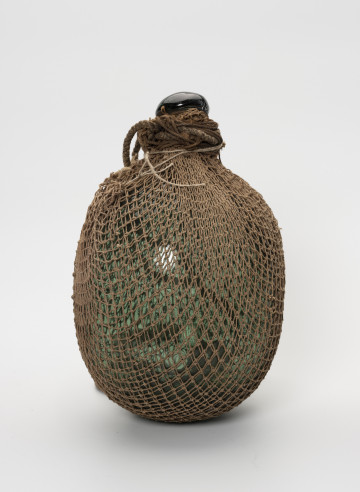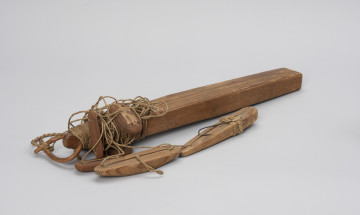
Float
1901 — 1949
National Museum in Szczecin
Part of the collection: Traditional fishing
Fishermen used gaffs as auxiliary tools for pulling seine lines out of the water, spreading the lines on which set nets were mounted, or for pulling and pushing boats. During winter fishing, gaffs were used to push poles by gripping them from below. In the past, gaffs served various purposes and were used in many trades. They were used to catch wood when it drifted away from raftsmen, and during ice transport, they were used to grip and push ice blocks. Poachers also used gaffs as spears, which led to a regulation from an inspection in 1767 in the Puck district that stated, "No one should dare to go fishing with a gaff or catch eels with it under penalty...". Today, gaffs are most commonly used by sailors and firefighters – for mooring, retrieving lines and other equipment from the water, even rescuing drowning people, and for demolition or breaking apart burning elements during fires. The Pomeranian Ethnography Department of the National Museum in Szczecin has 17 gaffs, but only 2 have retained their long shafts. The fisherman's gaff here was used in the first half of the 20th century in Szczecin's Skolwin district, which is located on the Oder River and, through the Iński Nurt and Babina water channels, also has access to Lake Dąbie. It was purchased for the museum's collection shortly after World War II, in 1949. Małgorzata Kłosińska-Grzechowiak
Author / creator
Object type
pike pole, fishing tackle
Technique
forging, cutting, planing, turning (machining)
Material
wood, gwoździe żelazne, iron
Origin / acquisition method
purchase
Creation time / dating
Creation / finding place
Owner
The National Museum in Szczecin
Identification number
Location / status

1901 — 1949
National Museum in Szczecin

1920 — 1950
National Museum in Szczecin

1901 — 1950
National Museum in Szczecin
DISCOVER this TOPIC
National Museum in Szczecin
DISCOVER this PATH
Educational path